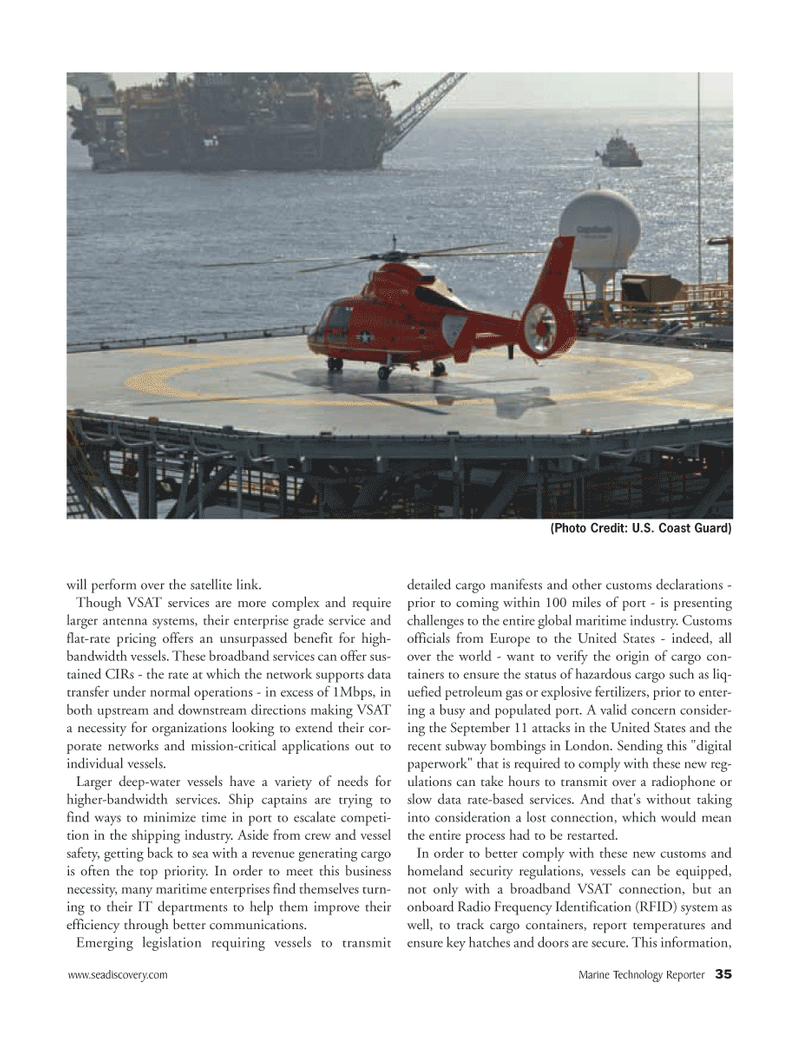
Page 35: of Marine Technology Magazine (April 2006)
The Offshore Technology Edition
Read this page in Pdf, Flash or Html5 edition of April 2006 Marine Technology Magazine
www.seadiscovery.com Marine Technology Reporter 35 (Photo Credit: U.S. Coast Guard) will perform over the satellite link.
Though VSAT services are more complex and require larger antenna systems, their enterprise grade service and flat-rate pricing offers an unsurpassed benefit for high- bandwidth vessels. These broadband services can offer sus- tained CIRs - the rate at which the network supports data transfer under normal operations - in excess of 1Mbps, in both upstream and downstream directions making VSAT a necessity for organizations looking to extend their cor- porate networks and mission-critical applications out to individual vessels.
Larger deep-water vessels have a variety of needs for higher-bandwidth services. Ship captains are trying to find ways to minimize time in port to escalate competi- tion in the shipping industry. Aside from crew and vessel safety, getting back to sea with a revenue generating cargo is often the top priority. In order to meet this business necessity, many maritime enterprises find themselves turn- ing to their IT departments to help them improve their efficiency through better communications.
Emerging legislation requiring vessels to transmit detailed cargo manifests and other customs declarations - prior to coming within 100 miles of port - is presenting challenges to the entire global maritime industry. Customs officials from Europe to the United States - indeed, all over the world - want to verify the origin of cargo con- tainers to ensure the status of hazardous cargo such as liq- uefied petroleum gas or explosive fertilizers, prior to enter- ing a busy and populated port. A valid concern consider- ing the September 11 attacks in the United States and the recent subway bombings in London. Sending this "digital paperwork" that is required to comply with these new reg- ulations can take hours to transmit over a radiophone or slow data rate-based services. And that's without taking into consideration a lost connection, which would mean the entire process had to be restarted.
In order to better comply with these new customs and homeland security regulations, vessels can be equipped, not only with a broadband VSAT connection, but an onboard Radio Frequency Identification (RFID) system as well, to track cargo containers, report temperatures and ensure key hatches and doors are secure. This information,
MTR#3 (33-48).qxd 4/7/2006 11:18 AM Page 35

 34
34

 36
36
